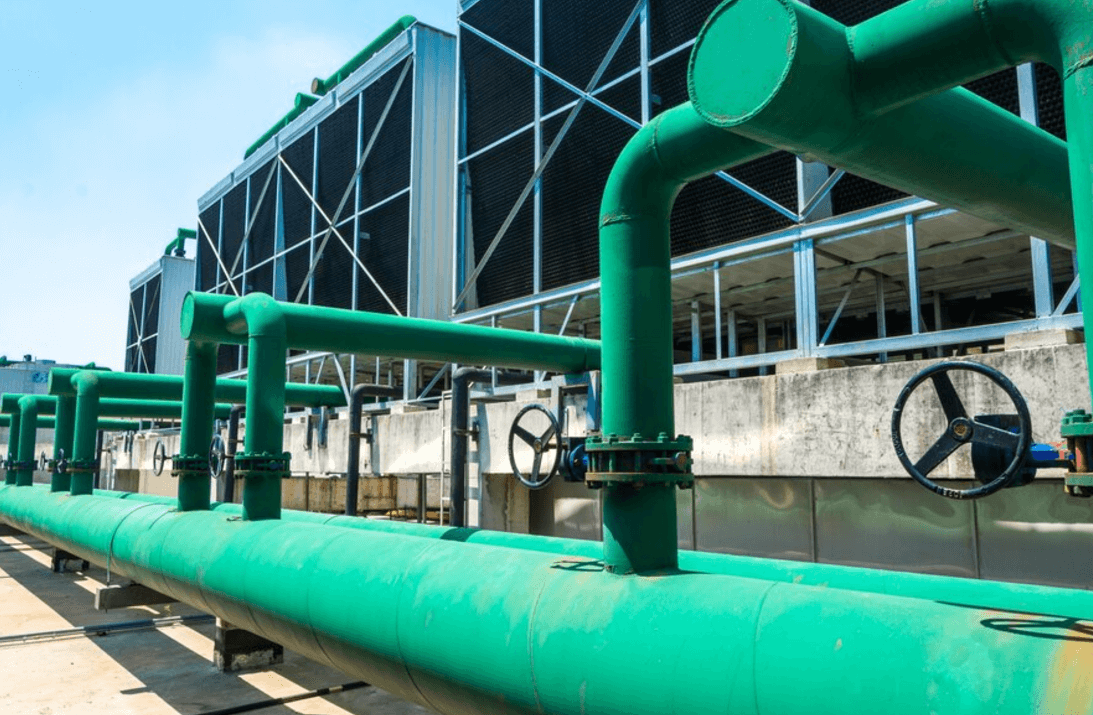Sewage treatment plays a vital role in ensuring wastewater from homes, industries, and businesses is safely cleaned before being released back into the environment. With rising populations, urbanization, and industrial activities, the pressure on wastewater systems continues to grow. This makes efficient sewage treatment more crucial than ever. In this article, we explore how Sewage Treatment Plants (STPs) help protect the environment and contribute to sustainable development.
How Sewage Treatment Plants Work
Sewage Treatment Plants are designed to remove contaminants from wastewater, which comes from homes, industries, and businesses. The treatment process involves several stages, using physical, chemical, and biological methods to purify the water. The main steps are:
- Preliminary Treatment:
Large debris, such as sticks, rags, and plastics, are removed through screens and grit chambers. - Primary Treatment:
Solids settle at the bottom, forming sludge, while oils and grease float to the top. - Secondary Treatment:
Microorganisms break down organic matter in the wastewater, reducing pollutants. - Tertiary Treatment:
Additional filtration and disinfection (using chlorine or UV light) further purify the water. - Sludge Treatment:
Leftover sludge is treated and either disposed of or repurposed, such as being turned into biosolids for agriculture.
At the end of the treatment process, the water is mostly free of harmful contaminants and can safely be released into rivers, lakes, or oceans. In some cases, it can even be reused for purposes like irrigation or industrial cooling.
Reducing Water Pollution
One of the most direct ways in which Sewage Treatment Plants protect the environment is by preventing untreated wastewater from entering rivers, lakes, and oceans. Raw sewage contains a mixture of harmful substances, including pathogens, nutrients, heavy metals, and chemicals. If left untreated, these pollutants can severely damage aquatic ecosystems, harm marine life, and degrade the quality of water resources.
For example, untreated sewage can lead to eutrophication, a process where excess nutrients (mainly nitrogen and phosphorus from organic waste) promote the overgrowth of algae in water bodies. This algal bloom can deplete oxygen levels in the water, creating “dead zones” where aquatic life cannot survive. Sewage Treatment Plants reduce the levels of these nutrients, preventing such environmental degradation and ensuring healthier aquatic ecosystems.
By treating sewage before it is released into the environment, STPs play a vital role in safeguarding the quality of water resources that support both human populations and wildlife. Clean water is crucial for drinking, irrigation, recreation, and sustaining biodiversity. Sewage treatment, therefore, directly contributes to the protection of freshwater supplies and marine environments.
Protecting Public Health
Another significant way that Sewage Treatment Plants help protect the environment is by safeguarding public health. Raw sewage contains numerous pathogens, including bacteria, viruses, and parasites, which can cause diseases such as cholera, dysentery, and typhoid. Without proper treatment, untreated sewage can contaminate drinking water sources and pose a serious health risk to communities.
By using biological and chemical processes, STPs ensure that these harmful pathogens are removed or neutralized before the treated water is discharged into the environment. The disinfection phase, which typically involves chlorine or ultraviolet (UV) light, is particularly crucial in eliminating harmful microorganisms. By controlling the spread of waterborne diseases, Sewage Treatment Plants help to reduce the burden on healthcare systems and improve the quality of life in surrounding communities.
In addition to protecting human health, the treatment of wastewater helps preserve the integrity of ecosystems. Many species rely on clean water to survive, and untreated sewage can disrupt entire ecosystems. For example, pathogens in untreated wastewater can infect fish, amphibians, and other aquatic organisms. Sewage Treatment Plants help maintain healthy biodiversity by removing harmful microorganisms before the water reaches the environment.
Reducing Greenhouse Gas Emissions
While Sewage Treatment Plants are vital for removing contaminants from wastewater, they also play a role in mitigating climate change. Sewage treatment processes, especially those that involve anaerobic digestion, can help reduce greenhouse gas emissions by capturing methane, a potent greenhouse gas. Methane is often produced during the decomposition of organic waste in sewage sludge. By capturing and utilizing this methane for energy production, many modern STPs convert this waste into a renewable energy source.
In some advanced Sewage Treatment Plants, the methane gas is used to generate electricity or heat, which can power the plant itself or be fed back into the grid. This reduces the overall carbon footprint of the plant and makes the sewage treatment process more sustainable. Furthermore, utilizing biogas from wastewater treatment can reduce reliance on fossil fuels, contributing to the global effort to reduce carbon emissions and combat climate change.
In addition, many modern STPs incorporate energy-efficient technologies and sustainable design practices to minimize energy consumption. By investing in energy recovery systems, optimizing the treatment process, and improving operational efficiency, Sewage Treatment Plants can reduce their environmental impact and contribute to a more sustainable future.
Resource Recovery and Circular Economy
Another increasingly important aspect of Sewage Treatment Plants is their potential for resource recovery. In addition to purifying wastewater, many modern STPs are designed to recover valuable resources from the wastewater stream, promoting a circular economy and reducing the demand for raw materials.
- Water Reuse: Treated wastewater can be used for non-potable applications such as irrigation, industrial cooling, or even flushing toilets. In water-scarce regions, this can significantly reduce the demand for fresh water and ensure a more sustainable supply.
- Biosolids: The sludge generated during the treatment process can be processed into biosolids, which are rich in nutrients and can be used as a fertilizer or soil conditioner. This helps reduce the need for synthetic fertilizers and promotes sustainable agricultural practices.
- Energy Recovery: As mentioned earlier, many STPs capture methane gas produced during the treatment of wastewater. This biogas can be used to generate energy, either to power the plant itself or to contribute to the local energy grid. In some cases, excess biogas can be sold as renewable energy, creating economic value from waste.
By recovering valuable resources from wastewater, Sewage Treatment Plants help create a more sustainable and circular approach to wastewater management. Rather than simply disposing of waste, these facilities can generate useful byproducts that benefit society and the environment.
Supporting Sustainable Urban Development
With rapid urbanization, growing populations, and increased industrialization, the challenge of managing wastewater becomes ever more pressing. Sewage Treatment Plants are integral to sustainable urban development, as they ensure that cities can grow while minimizing their environmental impact. Proper sewage treatment helps prevent the contamination of water sources, reduces pollution, and protects public health, all of which are essential for building resilient, livable cities.
Furthermore, Sewage Treatment Plants are increasingly being integrated into green infrastructure projects. For example, some modern facilities are designed with eco-friendly features such as wetlands, biofiltration systems, and green roofs, which not only improve the efficiency of sewage treatment but also enhance local biodiversity and provide aesthetic benefits to urban areas. These innovations demonstrate that sewage treatment can be harmonized with environmental conservation efforts, helping to create sustainable urban spaces.
Conclusion
Sewage Treatment Plants are a critical part of modern infrastructure. They protect the environment, public health, and natural resources. By treating wastewater before it’s released into the environment, STPs prevent pollution, safeguard water quality, and protect aquatic ecosystems. They also reduce greenhouse gas emissions, recover valuable resources, and support sustainable urban development.
As the world faces challenges like water scarcity, pollution, and climate change, efficient sewage treatment will become even more vital. Investing in advanced technologies and sustainable wastewater management practices will help ensure a cleaner, healthier, and more sustainable future for generations to come.
By prioritizing the development and maintenance of Sewage Treatment Plants, we can ensure that our communities and ecosystems thrive—despite rapid urbanization and industrial expansion. Sewage Treatment Plants are not just infrastructure—they are essential guardians of the environment.









